
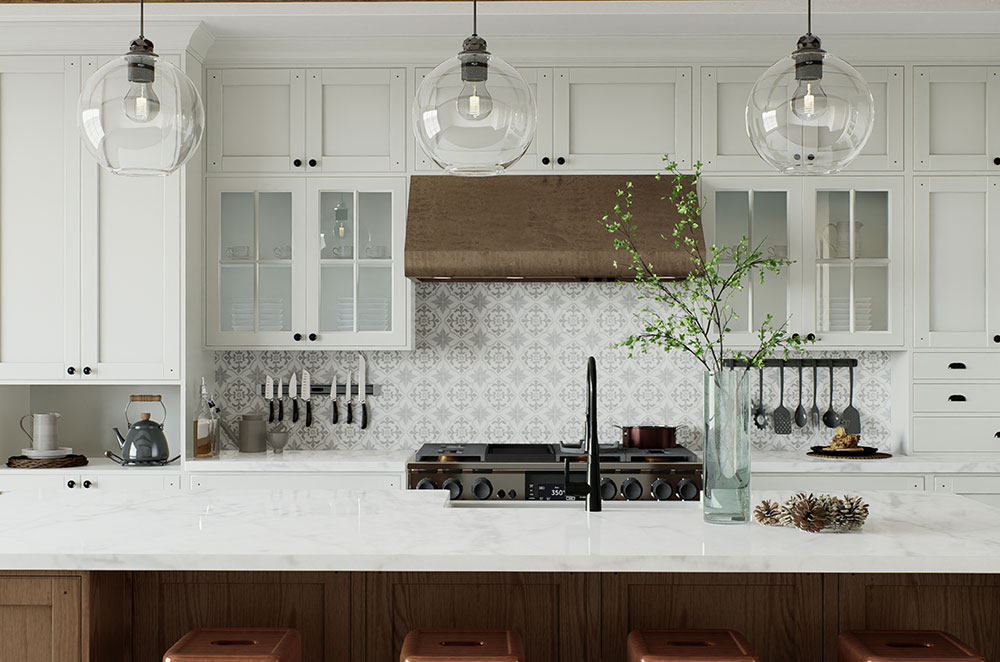

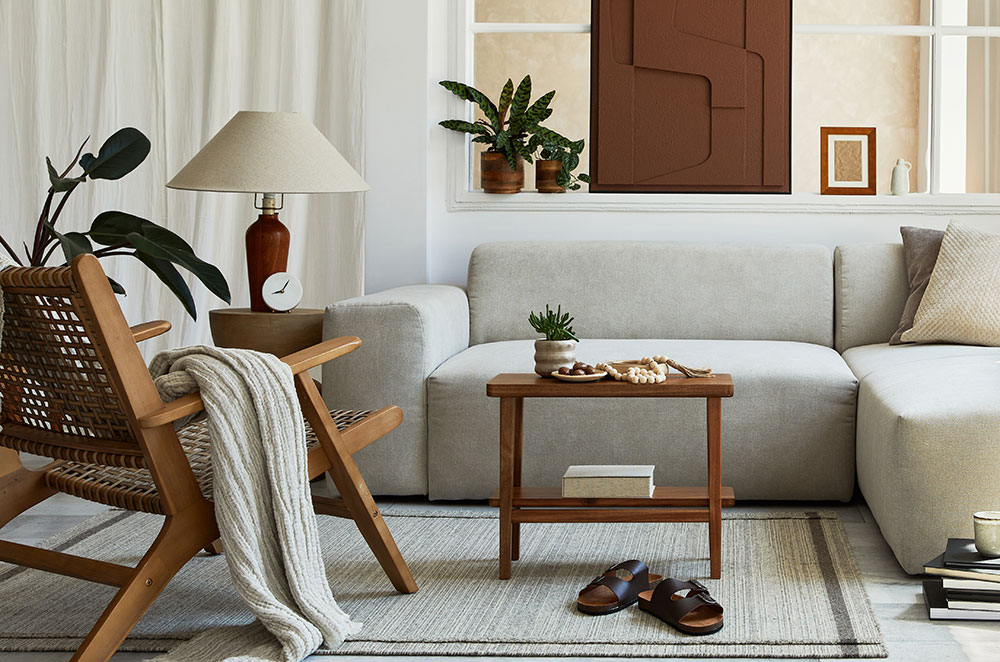
 +
+


 +
+


 +
+


As you embark on a new year, take the opportunity to infuse your home with fresh energy and create a space that nurtures your well-being. In this edition of Good to Be Home, discover various ideas help inspire your revamp, including tips for when to initiate home-improvement projects, features that homebuyers are looking for in today’s market, an Italian twist on two recipes, and ways to freshen up the air inside your abode.
Each season of the year is uniquely suited for different renovation projects, enabling you to maximize your investment with the right game plan. The enclosed article will guide you through the process by highlighting what types of upgrades to make when and offering a few examples of ones you can take on.
Looking to sell soon or simply boost your home's value for the future? Explore the latest trends and must-have features that are driving demand. By implementing some of them (or highlighting the ones you already have), you can potentially drive up your property's worth and, in turn, the price you can get for it.
Indulge your taste buds with two timeless recipes that will transport you to the heart of Italy. Cook the oven-roasted chicken thigh dish for a fulfilling meal and the cinnamon amaretti cookies for a comforting dessert, both of which can make any winter night instantly more cozy.
The air we breathe plays a big role in our well-being, and yet its importance is often overlooked. If you want to make your home healthier, check out the guide inside on simple yet effective ways to improve the air quality in your home. With just a few easy steps, you can create a safer and more comfortable living environment.
Here’s to a more beautiful, healthy, and enjoyable home this year! As always, it’s a pleasure to send you this magazine.
 +
+


Taking on a home renovation project can be an exciting yet taxing endeavor, requiring no small amount of planning, time, and effort. But you can navigate this process more effectively by timing your improvements throughout the year—a tactic that can help you save money, maximize results, and minimize disruption. Allow this seasonal guide to assist you in establishing a solid renovation timeline for the months ahead.

Although winter might seem like a less than ideal time for home renovations, it offers numerous opportunities to engage with the process. For one, you can use the slower pace to compile ideas for the upcoming year, identifying what repairs and improvements you’d like to tackle. You could even visit conferences or watch home improvement shows to learn about fresh trends, products, and techniques you could implement in your projects. As part of this game plan, craft a thorough budget that outlines the total funds you may expect to have for renovations—whether through savings or loans—along with the amount each project will likely require. To help you determine the latter, consider reaching out to contractors and suppliers, who may be more available to offer estimates and consultations in their offseason.
During this planning phase, you may discover that certain projects you flagged for later are much cheaper to initiate now; thanks to lower demand, costs for construction materials and labor tend to be much lower this time of year. For instance, many people are reticent to replace windows in winter since the process can cause some energy loss. However, companies may be willing to dramatically whittle their prices down for you in order to keep their workers busy. So if you spot a chance to come in under budget for a given project, don’t hesitate to jump on it.
This season is also a good time to tackle smaller projects around the house. Adding built-in shelves to your closet will help you create extra storage space for stowing away your sweaters come spring, while refinishing old furniture or adding peel-and-stick wallpaper to an area can give a space new life. You’d be surprised at how a minor makeover can go a long way toward making your home that much more comfortable and inviting.

With its warmer weather and brighter days, spring makes for a great season to start on the exterior of your house. Just keep in mind that home-improvement activity often picks up steam in these months, which can drive higher costs and longer wait times with contractors. This may be unavoidable if you need to make repairs, such as to a leaky roof that won’t survive another rainy season. You may also find it worth the expense if you’ve been yearning for a patio, pergola, or other major feature that will transform your backyard into a personal haven just in time for summer.
Otherwise, aim to take on projects you can tackle yourself, focusing on improving curb appeal and outdoor comfort and boosting your energy efficiency. For the former, this could involve staining or painting an existing deck, installing a DIY water feature, or sprucing up your landscaping. A fresh bed of flowers in your garden or new shrubs at the corners of your house can instantly transform the space, whether for your own enjoyment or to boost your home’s worth.
As for energy-efficient upgrades, there are plenty of ways to keep your energy costs low amid warmer temps without having to replace your windows. Primarily, look to seal gaps around windows and doors to prevent hot air from entering and cool air from escaping; all you may need is some caulk or weatherstripping and a free afternoon. Another easy solution is to simply swap out your window treatments for ones more effective at blocking the sunshine, and thus the heat, coming through. Cellular shades are a great option for their ability to trap cool air before it exits, as are lighter-colored drapes that can reflect and diffuse sunlight.

Summer’s sweltering temps and blistering sun can make any exterior improvement a struggle, so consider focusing on interior upgrades this season, whether they’re big, small, or somewhere in between. Perhaps give your flooring some attention; after the wet conditions of winter and spring, it may benefit from a little TLC. You could replace carpeting, refinish hardwood floors, or install something more durable like laminate or vinyl. Other ideas for enhancing your interiors could include upgrading your lighting, repainting your living room, or even having your fireplace serviced or redone. Like with windows in winter, you may be able to get a reduced price for the latter during these professionals’ offseason.
Looking for smaller projects that won’t get you too sweaty? Consider swapping out your kitchen hardware, including faucet handles and cabinet knobs, to something sleek and monochrome for a more modern look. Or replace your showerhead with a handheld, water-efficient one that offers different spray settings, lending a more customizable shower experience. Such changes may seem relatively insignificant, but they can have a huge impact both on the look of your spaces and your enjoyment of them.

This time of year is great for initiating just about any project due to its temperate weather and generally lower improvement costs. Ultimately, it comes down to what your priorities are and what you have left on your list from the start of the year. For instance, if you’ve been wanting to do something more ambitious, such as overhauling your kitchen or primary bathroom, it may be a more reasonably priced project now than during spring or summer.
In addition, focus on areas that may cause you trouble come wintertime. If you’ve yet to swap out your old windows, it may be worth going forward with it before the temperature dips; the US Department of Energy estimates that replacing inefficient ones can help homeowners save 25 to 30 percent on average for heating and cooling costs. Likewise, reconsider getting your roof taken care of if you passed over the project earlier in the year and it’s been giving you trouble. You’ll want any holes patched or shingles swapped—or even the whole shebang replaced—before the first snowfall.
Strategically planning your home renovations throughout the year can help you produce a functionally beautiful space and even save you money. Always put safety first and do extensive research, and make sure to savor the process with every season.
 +
+


Whether you’re about to plant a For Sale sign in your front yard or are considering how to profit off your home’s equity in the future, it’s helpful to stay clued in to the features homebuyers are hunting for. And while you can chalk up some preferences to individual quirks, there are a few aspects most people tend to agree on, such as luxurious outdoor lounge areas and impressive open kitchens. Check out this guide to get the scoop on what buyers want so you can upgrade your home accordingly.
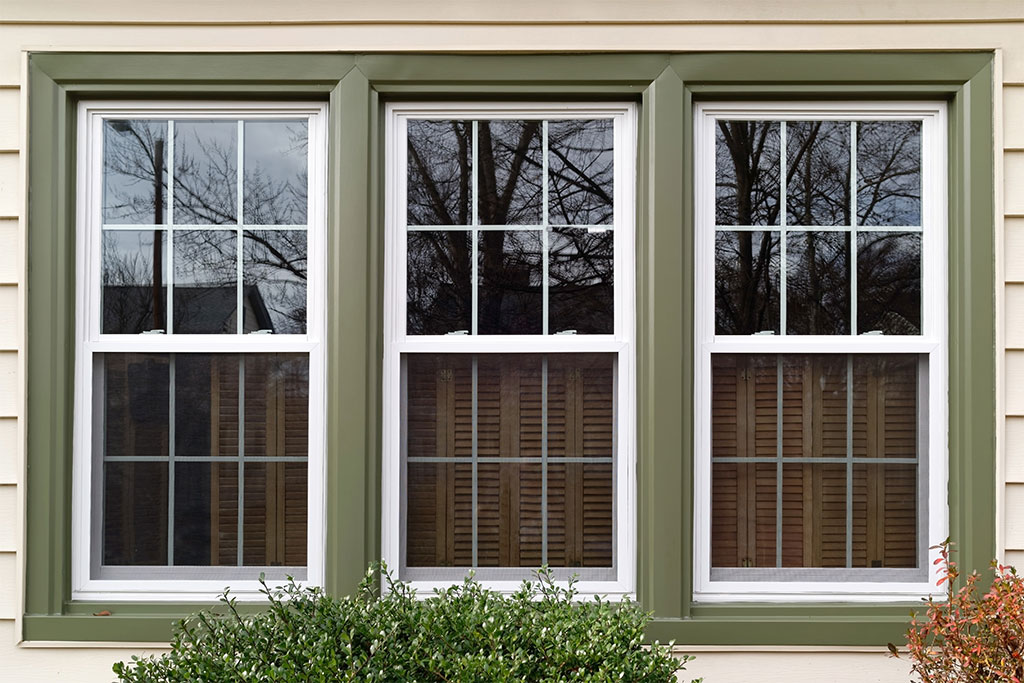
Regardless of age or demographics, shoppers continue to prioritize finding a property with impressive exterior features. And they have a particular penchant for elements that emphasize efficiency, comfort, and modern living in a nicely landscaped environment.
Sustainable materials
Buyers are showing a keen interest in sustainability, in large part to reap the benefits of ongoing energy savings. Invest in features such as well-insulated doors, windows, and walls to boost your home’s appeal to these more eco-conscious shoppers. Likewise, if you’re upgrading any material components of your home, opt for salvaged wood or bamboo, which regenerates quickly to boast an overall low environmental impact.
Thoughtful outdoor spaces
Patios, pergolas, and other lounge areas have surged in popularity in recent years. Homebuyers now value having dedicated outdoor spaces for various activities, including exercise, relaxation, and hosting guests. Homebuilding experts also note that engaging amenities such as firepits and media equipment and comfort features like ceiling fans and misting systems are especially appealing.
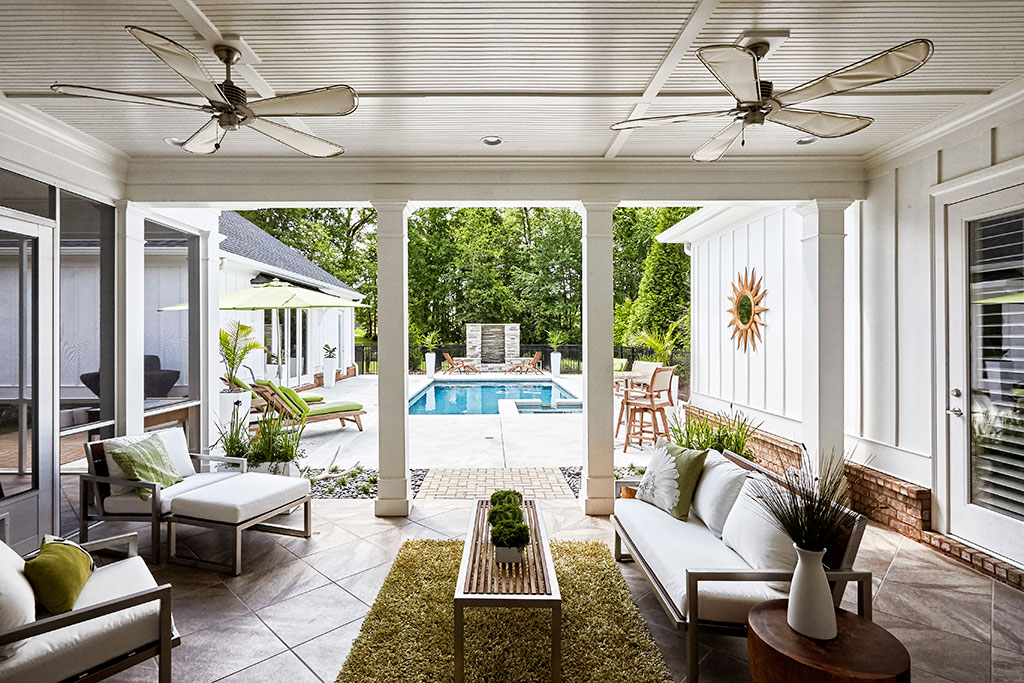
Upscaled indoor-outdoor living
According to a Fixr.com survey, 78 percent of home-design experts labeled indoor-outdoor living as the top exterior design trend of 2024. Think large picture windows that provide expansive views of your yard and consistent flooring or color schemes across your indoor spaces and adjacent patios, creating a seamless link between the two. Even in cooler months, these features remain valuable, offering buyers the ability to dwell in the comfort of indoor heat without feeling isolated from their natural surroundings.
Lighting
This element offers multiple benefits that could tempt shoppers, including chic style, emphasis on attractive features, and the potential for greater security. Consider adding accent lighting to your home’s facade and around your outdoor living spaces, and incorporate sensor lights near all entryways and gates for extra safety.
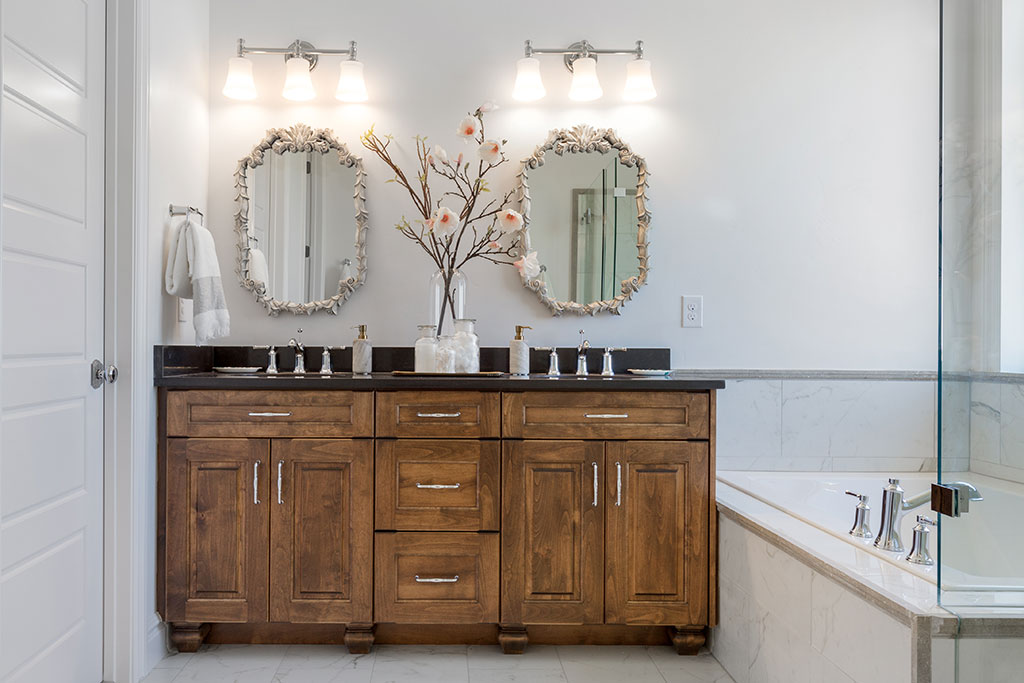
The top consideration for most homebuyers when evaluating their options is space, especially for those upgrading from a smaller living environment such as an apartment. Many seek open floor plans that still feel comfortable and purposeful while featuring the following value-adding elements.
Luxurious bathrooms
Older homes tend to have only half baths near primary living areas. However, contemporary buyers want convenient access to full bathrooms on the first floor to better suit the chaos of daily life. Those needing to accommodate multigenerational living also generally want at least two primary bedrooms with en suite bathrooms.
Home offices
The pandemic has significantly increased remote work, driving the demand for a separate area that provides the comfort, quiet, and storage needed to ensure maximum productivity. Staging an extra bedroom as a home office could maximize its appeal to buyers, helping them see its possibilities.
Open kitchens
The kitchen is indisputably one of a home’s most important rooms, and it has the potential to make or break a sale. Open-concept layouts that flow seamlessly into a dining area—and, ideally, an adjacent living space—are particularly captivating to buyers. Room for a table, a central island, and extra counter space are also in high demand.

Efficient appliances
Although aesthetics can draw buyers, research shows that they may pay special attention to a home’s appliances, most notably those in the kitchen and laundry room or utility closet. If any of yours are getting up there in years, investing in newer ones could fetch you a higher resale value, especially when it comes to your refrigerator, stove, and dishwasher.
Smart features
Intelligent technology isn’t just for smartphones anymore; many homebuyers are hoping to find a property with such advanced amenities built into it. “The expectation is that . . . tech-savvy home buyers will continue to evolve and shop for sophisticated, tech-enabled homes,” writes Dan Weisman on realtor.com. To set up a smarter home, install features such as digital thermostats and energy monitors along with innovative security devices like smart locks, automatic lights, and cameras, all of which can potentially boost your property’s value.
Visual elements
Buyers these days may be drawn to certain elegant design features, including exposed beams, quartz surfaces, and a fireplace. Because the popularity of these elements can trend up and down, there’s no guarantee that adding them to your home will lend a high ROI. However, if you already have them in place, highlighting them in listings and buyer tours could increase your chances of landing a lucrative offer.
While this list of buyer wishes is fairly comprehensive, it’s by no means exhaustive. What each house hunter wants and needs will vary, and more particular shoppers may have highly individualized requests. To boost the odds of securing a faster and more profitable sale, consult with your real estate agent, who can help make your property a winner in a competitive market.
 +
+


There’s an undeniable magic in cuisine passed down through generations. More than just culinary creations, such dishes are testaments to a family’s ongoing relationships, imbued with love, care, and the comfort of home. These two recipes from the At Nonna’s Table cookbook offer a taste of tradition and a warm embrace, inviting you to savor the simple pleasures of good food and cherished memories.
Elevated with a tangy mustard sauce and the sweetness of leeks, this dish is a celebration of the tender richness of roast chicken.
These delicate, melt-in-your-mouth cookies are infused with the spice of cinnamon to make a delightful Italian treat.
Excerpted from At Nonna’s Table by Paola Bacchia, published by Smith Street Books, 2024. Photography by © Paola Bacchia.
 +
+


recipe by paola bacchia
photos by paola bacchia
We always had dijon mustard in the fridge, mainly to eat with boiled meats, pork sausages or ham. Mamma also paired it with chicken, garlic and wine in a dish she cooked in the electric frying pan. I used to think there was cream in this dish, as the sauce that was spooned over the chicken was so creamy. The leeks are my addition, and make an ideal bed for the chicken thighs as they braise in the pan juices. This dish is lovely with mashed or pan-cooked potatoes, polenta or even bread—anything that will catch the lovely sauce.

Serves 6
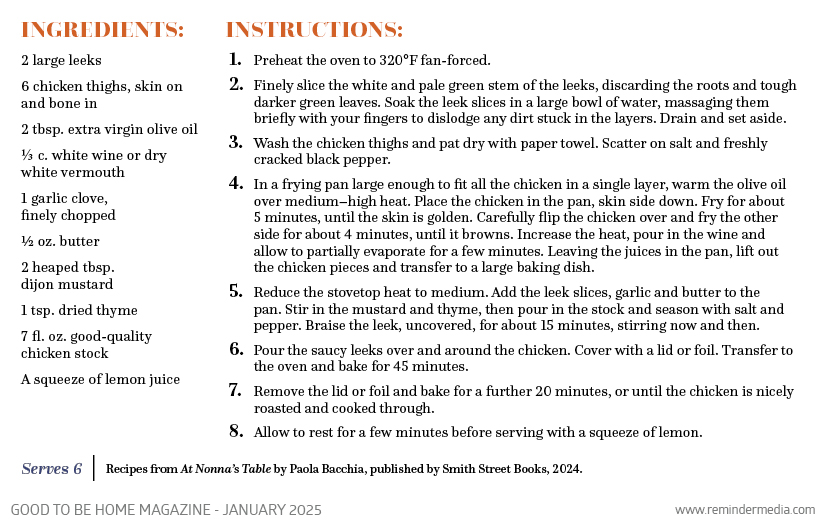




 +
+


recipe by paola bacchia
photos by paola bacchia
I have taken the liberty of adding cinnamon to my mother’s recipe. It gives these soft, chewy amaretti an additional warmth, which I just love. When I have egg whites left over from making custard, I often make a double batch and pop most of them in a sealed bag in the freezer. I take one or two out of the freezer, and after about 15 minutes at room temperature they are ready to be dunked in my mid-morning coffee.

Makes about 18
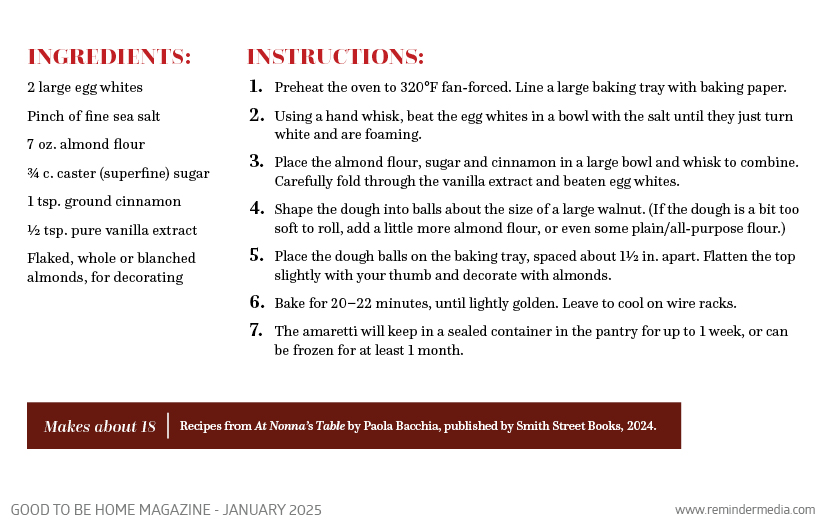




 +
+


Your home is meant to be a sanctuary, a place where you can relax and recharge after a long day’s work. However, the air inside it might be harboring unseen contaminants, posing a threat to your and your family’s well-being. The good news is that with some practical strategies and mindful habits, you can significantly reduce the level of them, creating a healthier and more comfortable environment for everyone.
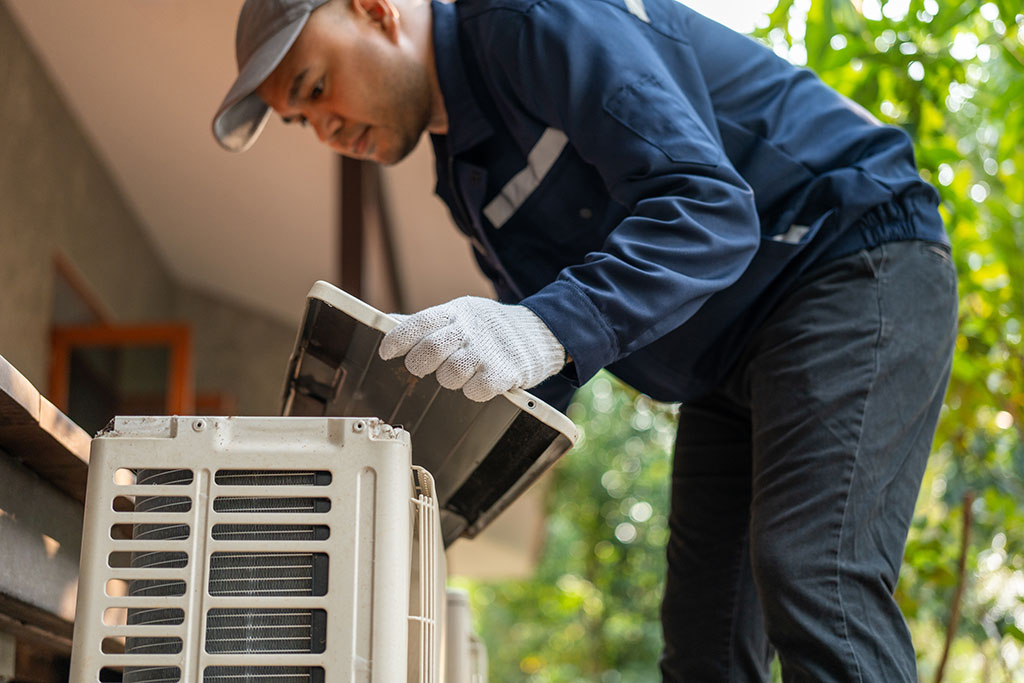
According to the EPA, there are numerous sources of indoor air pollution, including radon, pesticides, household cleaning products, air fresheners, central heating and cooling systems, and more. Each may give off different pollutants—like volatile organic compounds (VOCs)—and to different degrees depending on a variety of factors. For instance, age and maintenance history can play a huge role when it comes to appliances. So an HVAC system that’s serviced every year and has its filters regularly changed won’t pose as high a risk as one that’s been ignored.
Exposure to these pollutants can have both an immediate impact on your wellness and a long-term one without sufficient efforts to reduce them. Say there’s been a recent mold development in your home. You may initially experience cold-like symptoms, including headaches, dizziness, and fatigue, but if the problem is quickly addressed, they should dissipate promptly. However, if it persists, you could develop more serious issues like respiratory or heart disease or even cancer. To promote a safer home environment and protect your health, it’s crucial to take proactive measures to mitigate any indoor pollution risks.
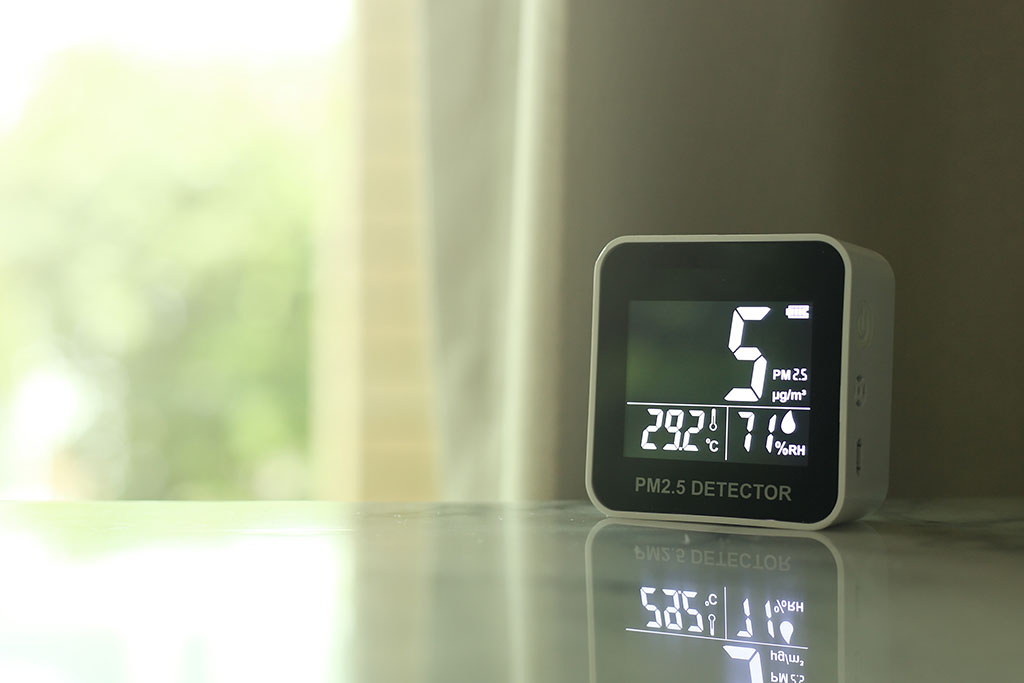
First things first is assessing the current air quality of your home. Consider installing an indoor air quality monitor, which is a device that measures the levels of VOCs, particulate matter, humidity, and other factors. You can also purchase specialized testing kits for pollutants especially likely to be a problem for your property, such as radon, mold, or carbon monoxide. For instance, all types of homes are susceptible to radon—a colorless and odorless gas that comes up from the ground and collects in cracks in your home’s foundation—but it tends to concentrate the most in basements. As radon is linked to lung cancer, it’s a good idea to test for it if your home has a sublevel. Should elevated levels be detected, look into solutions for bringing them down, such as sealing your foundation or installing a radon mitigation system.
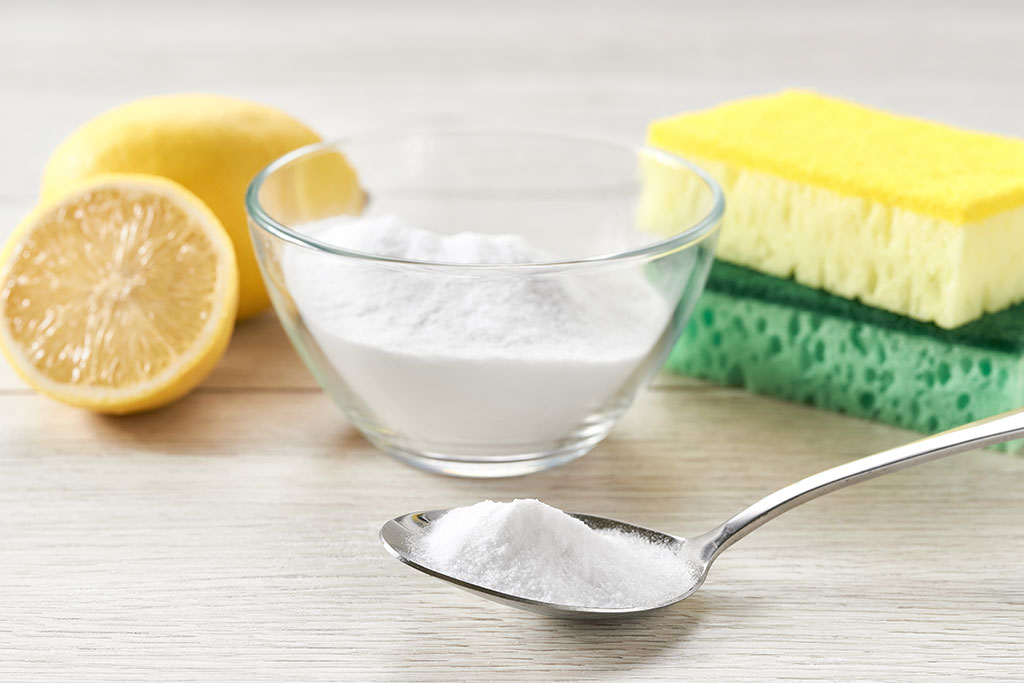
In addition to outside sources, you may be bringing contaminants into your home without even realizing it. To help prevent this, reassess your habits and purchasing decisions for healthy changes you can make. As a general rule, it’s best to prohibit smoking indoors entirely; the harmful chemicals in secondhand smoke can linger in the air and cause respiratory issues and other health problems, especially for children and individuals with preexisting conditions. Additionally, carefully consider the cleaning products you use. Ones like glass cleaners and bleach often contain dangerous substances, so instead opt for products with natural, nontoxic ingredients like vinegar and baking soda to clean your home with. Similarly, avoid using synthetic fragrances and aerosol air fresheners since they can give off high levels of VOCs.

Because the outside air is often less polluted, bringing fresh air into your home is a simple yet effective way to dilute its concentration of indoor pollutants. For natural ventilation, open your windows for at least ten minutes a day, even in winter. (Just be sure to check that your area isn’t under an air quality alert before doing so.) Even more, it’s important to change your HVAC filters at least once every three months to help ensure that your system is functioning properly, bringing in clean air while filtering out pollutants. These simple steps can go a long way toward making your home healthier and more comfortable.
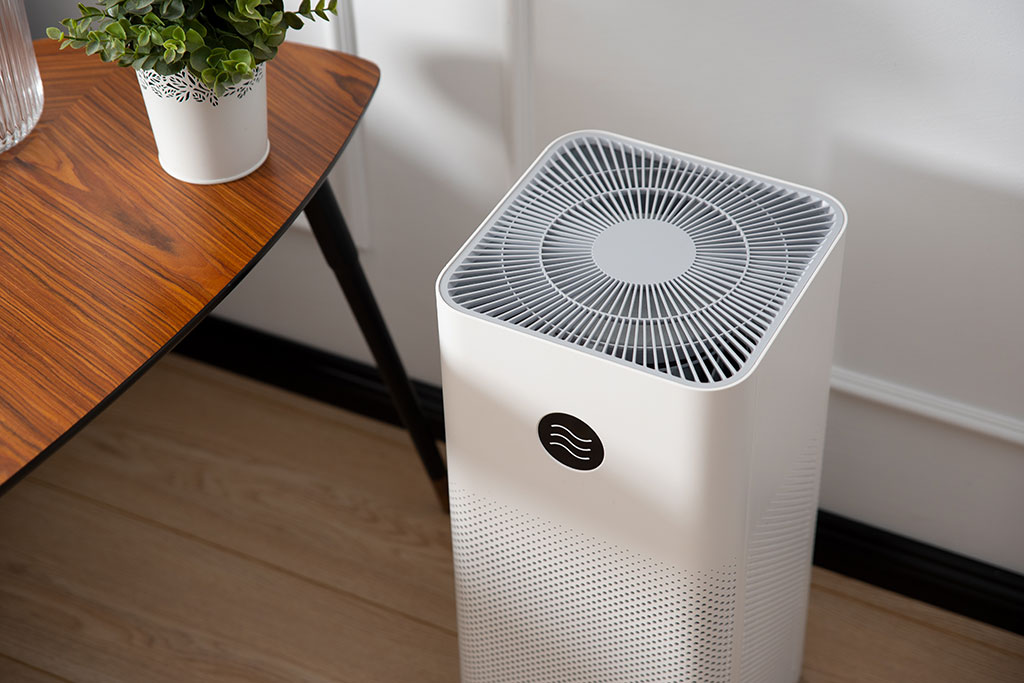
Purifying the air in your home is a surefire method of improving air quality. One natural and aesthetically pleasing solution may be to add houseplants to various spaces. Studies show that certain ones, such as spider plants, peace lilies, and English ivy, absorb gaseous pollutants like formaldehyde and carbon monoxide; they are especially effective when placed in areas with lower ventilation.
For more robust protection, consider investing in a portable air purifier equipped with a HEPA filter, which can remove up to 99 percent of harmful particles, allergens, and chemical pollutants. Place one in the room with the most potential contaminants, such as your kitchen, and at least six inches away from walls, doors, and other furnishings. If you have the budget, you can also have an air-purification system installed in your home’s ductwork; it will work with your HVAC system to improve air quality throughout the whole house as opposed to one room.
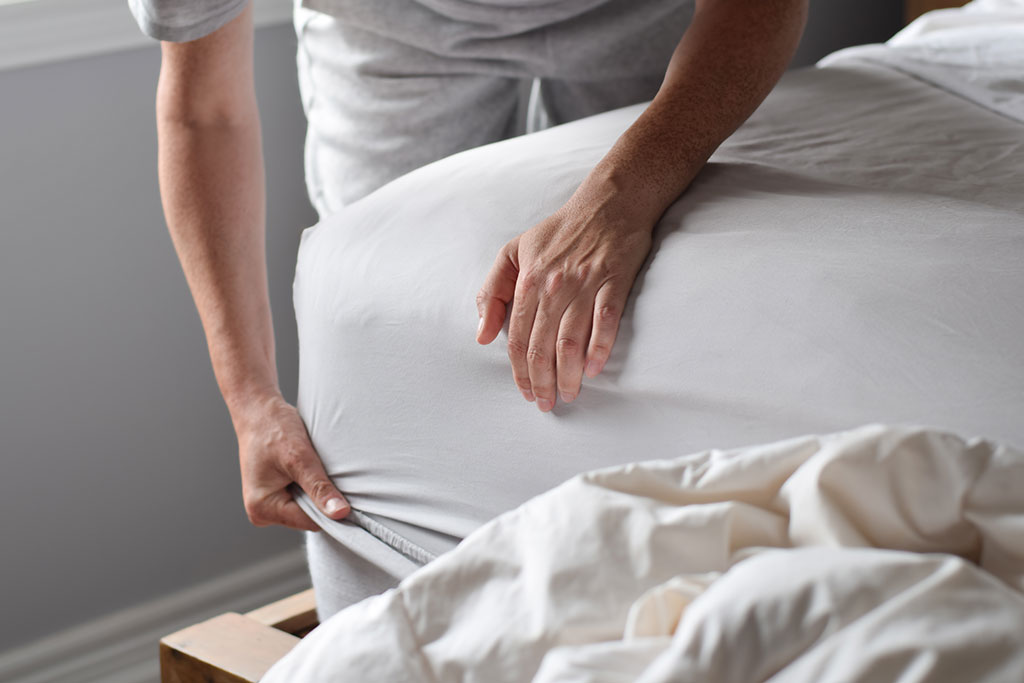
You may have never thought about it before, but how dirty your home is can actually have a significant impact on its air quality. Your bedding, for instance, collects dust, dust mites, and pet dander, all of which are common allergens. To keep these from accumulating, it’s recommended that you wash your sheets at least once a week in hot water. Similarly, dust the surfaces throughout your home and vacuum your carpets, rugs, and upholstery every week, equipping your vacuum cleaner with a HEPA filter to capture even the smallest particles of dust and other irritants.
Because you spend so much time at home, it’s important to take steps to ensure that its air quality is as optimal as possible. In turn, you can not only make it a relaxing space for you and your loved ones but also protect everyone’s long-term health.

 +
+







